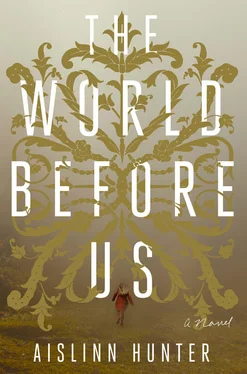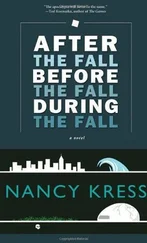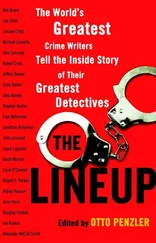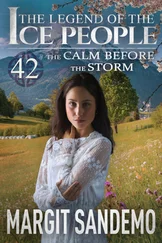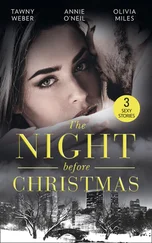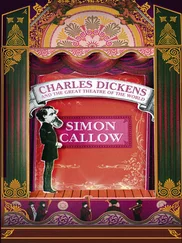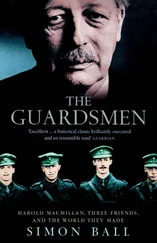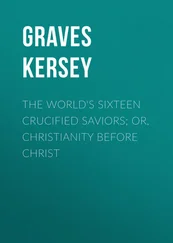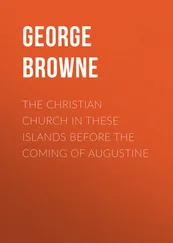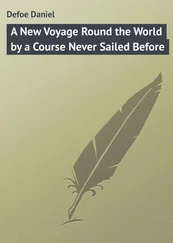“Ah, the feliform hare — I wondered where this had got to. I might keep this chap.”
Jane doesn’t say anything, and so Gareth sets the jar back on the shelf and turns to face her. His right eyelid is sagging slightly, which always happens when he’s overworked. “Listen, Jane, I know the last few weeks have been difficult for you — for all of us — but you’ll find something.” He drops a paternal hand onto her shoulder as he moves past her. “Failing that, at least be reasonable and hold off doing away with yourself until there’s room to cart a body out.” In the doorway Gareth puts his hand in his jacket pocket and rattles his keys, a habit that Jane realizes she’ll miss terribly. “And don’t worry about the Grainger,” he adds. “See what Paulo can do with it, and then let me know and I’ll call the buyer. Things break, Jane, you ought to know that by now.”
Jane first met Gareth when she was twenty-six years old. It was the first time any of us had stepped foot inside the Chester. She’d graduated the year before with a Masters in archives and records management and had been recommended to him by the senior archivist at the special collections library where she’d interned. Gareth agreed to interview her even though the vacancy was for a short-term position and he knew people who could fill it. It was winter and crowds were milling around the natural history hall in squeaky boots and woolly sweaters; the cloakroom beside the small museum shop was packed with puffy coats. Jane was early for her interview, and nervous, so she wandered across the hall and down a row of display cabinets, stopping when she reached a large glass case on thick oak feet. It contained a series of criss-crossed branches upon which Nathanial Hartford, Esquire, had supervised the wire mounting of two hundred and four hummingbirds in an attempt to display all the colours and designs of the species. The birds were caught in various stages of rest or flight, their wings closed or spread out like the slats of a fan. Most people paused here briefly, if they stopped at all, but Jane studied each bird in turn, the dark beads of their eyes, their long bills, flamboyant gorgets. Those of us who had followed her into the museum studied the birds too, and watched her, the care she gave each individual thing.
“When is a bird no longer a bird?” one of us asked.
The question was soft, hung in the air like dust in a shaft of light. We turned toward the woman’s voice and could see some semblance of form, as if a stranger had arrived and was standing on the far side of a crown-glass window.
“Hello?” another of us called, and the one with the soft voice said “Hello” back.
In those days we didn’t speak; some of us didn’t even know we could. Instead we moved around Jane, around the city and the country the way the living sometimes do, heads bowed, caught up in our own half-formed preoccupations. But when this thought came out, it was voiced and heard, so we moved closer together and closer to Jane, suddenly aware of each other the way a group of strangers roused by a near-accident or noise on the street might look up from the pavement to discover they are not alone.
Before Jane, before the Chester Museum, there had been a long period of silence. It hung like a pendle on a chandelier, a heavy glass tear. Some of us woke in the woods to William shouting for Lily, others to the search party that followed, to men and women crashing through the forest, their flashlights arcing across the places where we’d been sleeping. Others of us woke years later to Jane’s footsteps in the asylum wards when she visited the Whitmore as a graduate student, her heels clipping down a long corridor.
It was, for all of us, like waking from a long and fevered sleep, the nature of the self we woke to slowly taking shape. One of us said he looked for his hands but couldn’t see them; another said that she moved toward a door that was nailed shut. What sense can be made of such a world, emptied of everything that was once familiar? When those of us who were in the woods saw Jane standing there in a panic we went forward to comfort her; when those of us who were at the Whitmore found her moving through the wards, we followed her from room to room. We did not say a word, did not even know there were others like us there; each of us was wholly alone in the whirl of our own uncertainty. In the gutted hall of what was once the Whitmore’s women’s gallery, Jane stopped and dropped her satchel on the floor, and so we stopped with her, watched her pry a wood board off the old window and peer out across the lawn toward the woods. There was a notebook sitting in the open mouth of her bag and she pulled it out and then rummaged around for a pen. On the top line of a fresh sheet of paper she wrote the word Whitmore —a blue scrawl we all moved toward.
How, you might ask, do we see ourselves? How have we come to understand our predicament? Look around you: everywhere life forces wanting to get out, things unintentionally contained, baskets of energy. One of us believes we are like atoms with no centre; the one who likes clocks says we are lost time. Another believes we are poems, another thinks we are dreams meant to sort useless information, another thinks we are like sheets set out on the summer line, holding fists of air. We all believe we are Here . Here the same way a street lamp exists in the useless hours of daylight, here the way the codes scrolling across Lewis’s laboratory computers equal a bird’s DNA. Here like the blue-plumed kingfisher when Lewis touched the screen and announced the bird’s name.
Over the past eight years we have come to know each other the way Sam knows the other dogs who traverse the green — as members of some disparate, unarticulated society, a loosely affiliated fraternity that never stays exactly the same. But those days are waning. We have become obsessed with fixity: we now do daily counts, march out for rounds, try to ferret out who came when; who amongst us might have shared histories. But accountability is a dangerous game. It demands fidelity — to the possibility of less-than-illustrious histories; to whom, exactly, we might have been.
Jane plays the message from her father again and fights the urge to call him. She wants to tell him to come, but the nuances of what she is feeling about seeing William would be beyond his grasp, and in any case he’s too far away — as always — to make a difference tonight. Her eyes drift up to the black dress hanging on the back of the door, and then to the clock that’s counting down the hours to William’s lecture.
It was a month ago that the Board of Trustees announced William Eliot as this year’s recipient of the Chester-Wood Book Prize. Jane was sitting against the back wall of the meeting room on a rickety Queen Anne chair that had once belonged to Mrs. Charlotte Chester, wife of the museum’s founder. She was waiting to make a short presentation on the deaccession process, had been only half listening to Gareth going over the final budget.
“The prize money, of course, will be deducted—” he’d said, and one of the board members — a woman who’d come from the art history department of a small university — interjected to ask if they knew who the recipient was. Gareth didn’t even glance up, his ruddy face bent close to his papers. “William Eliot for that book on Victorian plant hunters.” He flipped a page of the report and the rest of the board members followed.
Jane felt as if the room’s temperature had dropped ten degrees. She leaned forward, thinking for a second that she might be sick. The art historian glanced over at her quizzically, but then turned her attention back to Gareth. Sometime between discussion of the gift shop’s sales figures and admission revenues Jane stood up and inched along the wall toward the door, squeezing behind the chair of one of the more portly members. Gareth blinked up at her, then went back to his report.
Читать дальше
